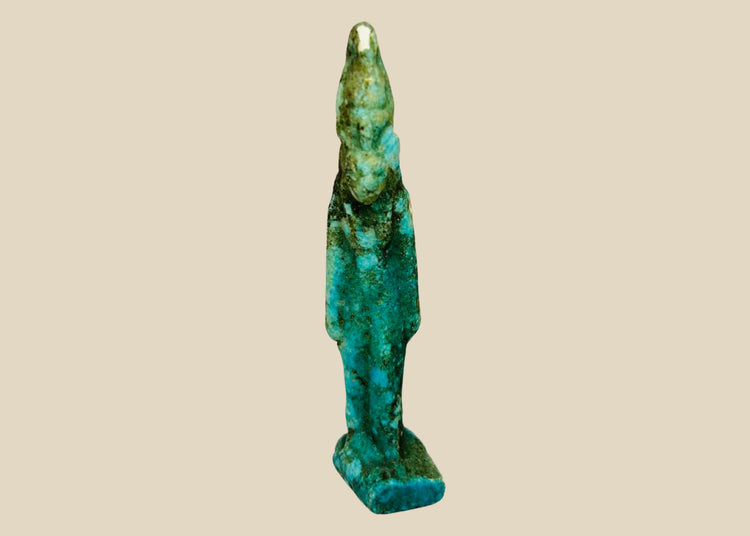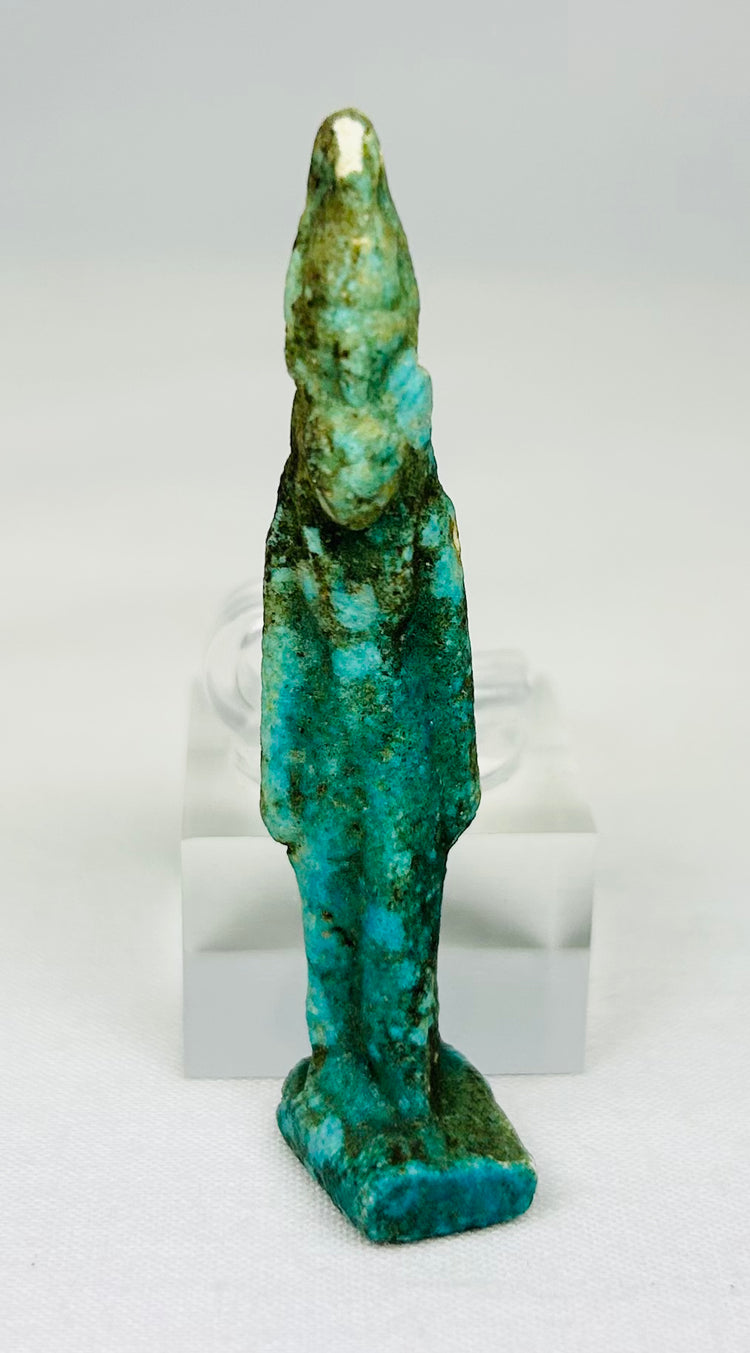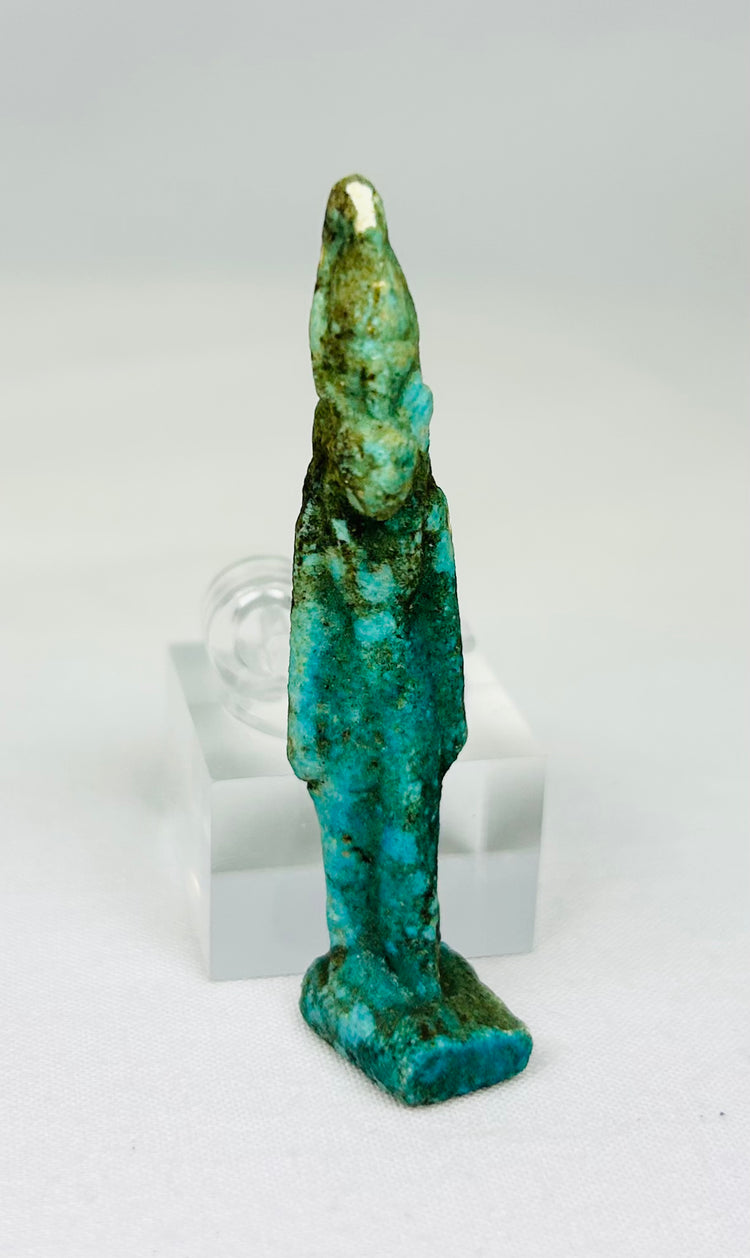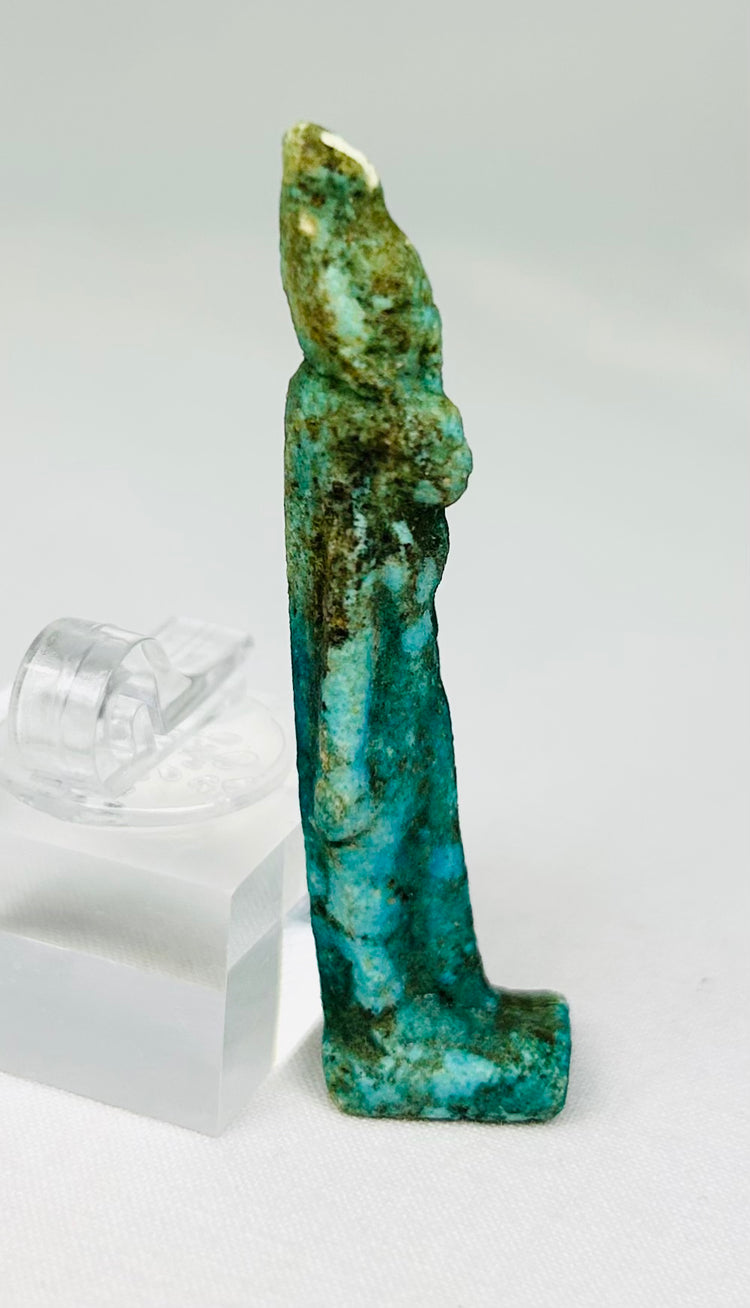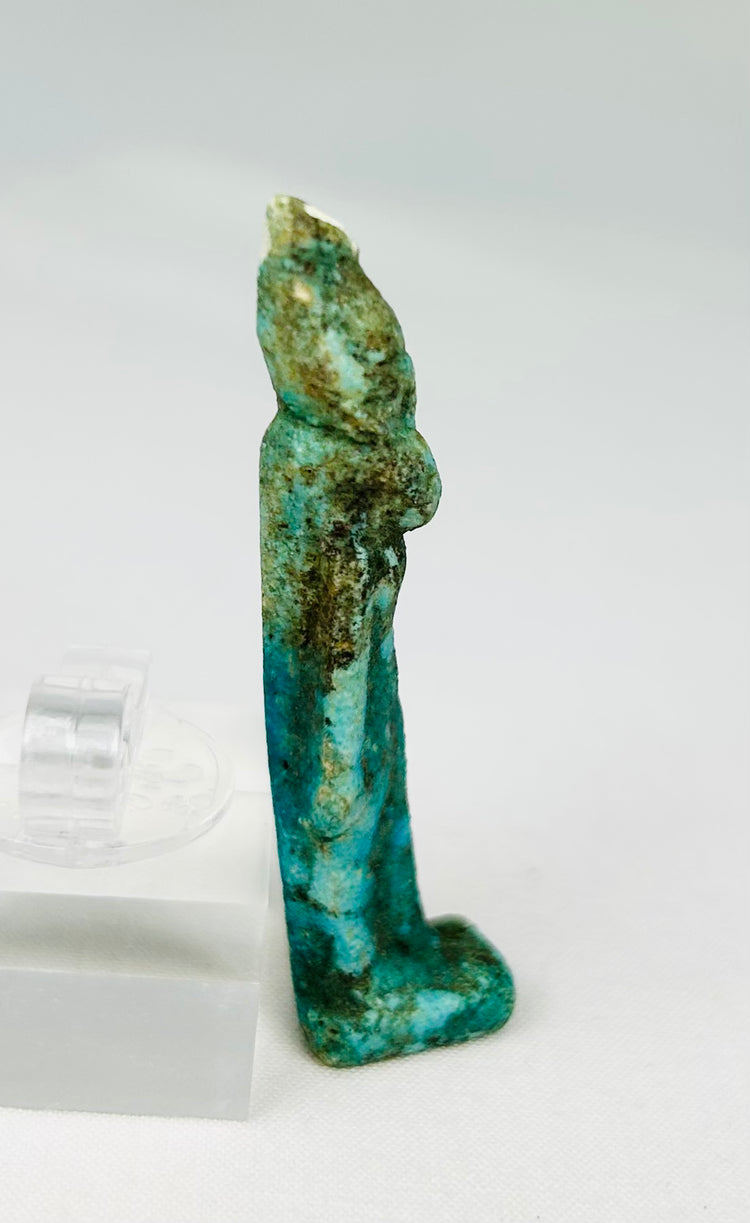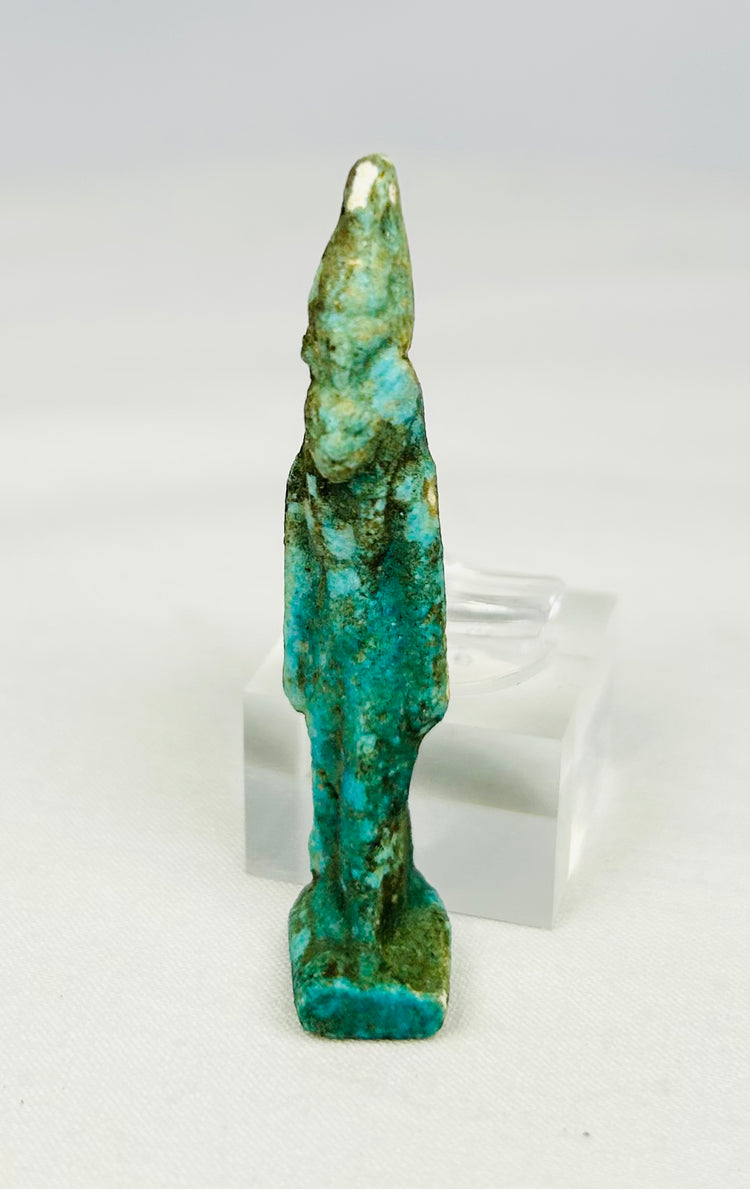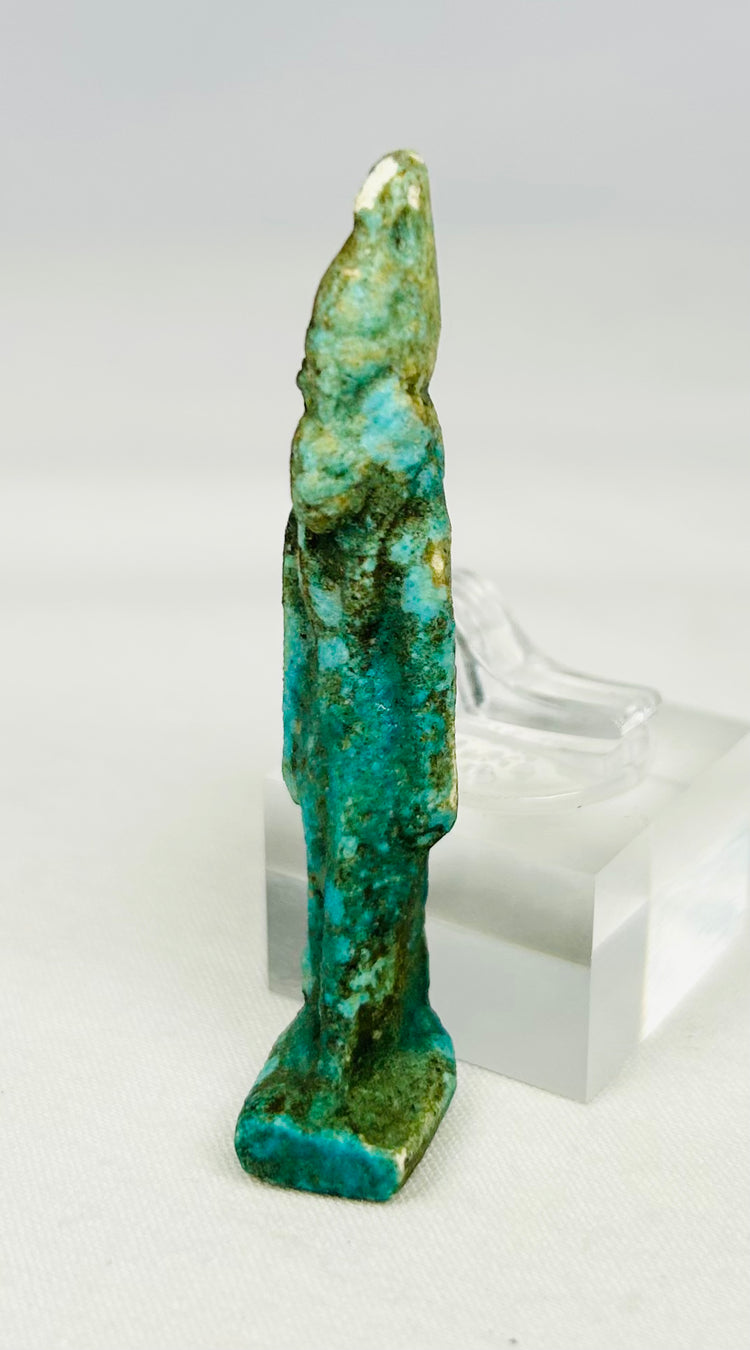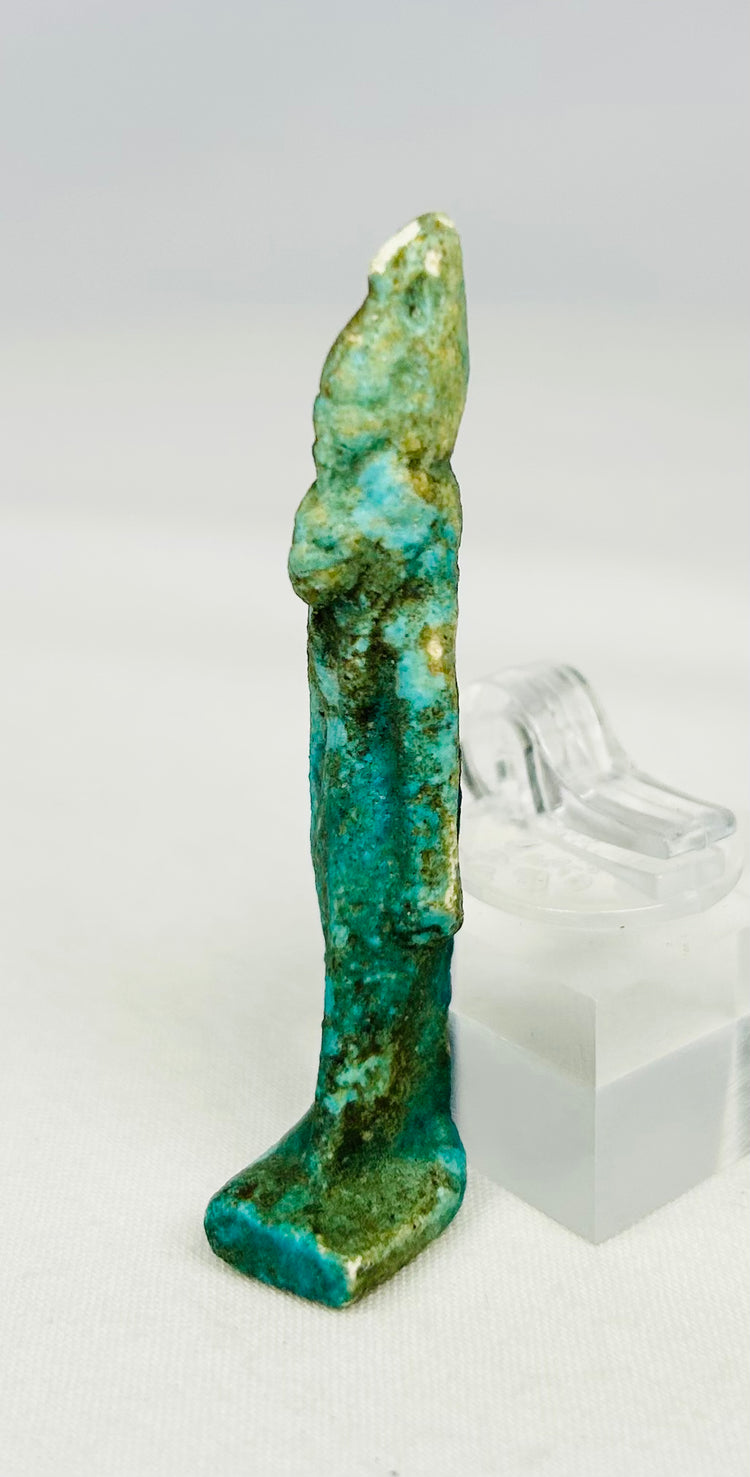Amuleto egipcio de loza turquesa de Sekhmet | Circa 664-332 a. C.
Descripción
Más
Menos
Contexto histórico y origen
Región: Antiguo Egipto
Material: Loza turquesa
Periodo: Período Tardío, 664–332 a. C.
Descripción
Este excepcional amuleto de loza turquesa representa a Sekhmet, la diosa guerrera, a menudo representada con cabeza de leona. Con unas medidas aproximadas de 5 x 1,3 cm, captura la esencia feroz y protectora de esta poderosa deidad. La cabeza de leona está finamente modelada y enmarcada por una sencilla peluca que se extiende entre puntiagudas orejas felinas. Su esmaltado turquesa, realzado con tonos naturales de verde y azul, refleja el valor simbólico y estético de la loza en el arte egipcio antiguo. Diseñado como un amuleto protector personal, este amuleto encarna tanto la devoción como la protección divina.
Características
- Representación detallada de la cabeza de leona de Sekhmet con peluca sencilla y orejas de felino.
- Loza turquesa brillante con variaciones de color naturales desde turquesa hasta verde azulado.
- Compacto pero poderoso en su forma, reflejando tanto un uso simbólico como devocional.
- Finamente elaborado en escala miniatura, destinado para uso personal o transporte.
Importancia cultural
Sekhmet, «La Poderosa», era venerada tanto como protectora como destructora. Hija de Ra y consorte de Ptah, encarnaba la ira divina contra los enemigos, pero también se la asociaba con la curación y la medicina. Los amuletos de Sekhmet se usaban para protegerse, invocando su feroz poder mientras se buscaba su bendición de fuerza y salud. La doble naturaleza de Sekhmet —como portadora de destrucción y restauradora del equilibrio— la convirtió en una de las deidades más importantes del Período Tardío, especialmente para los faraones que buscaban su favor divino.
Condición
Excelente conservación, con un vibrante esmalte de loza intacto. Ligero desgaste superficial acorde con su antigüedad. La intensa gama de colores y el tallado detallado realzan su autenticidad y atractivo para la exhibición.
Dimensiones
Altura: 2 pulgadas
Ancho: 0,5 pulgadas
Edad
Período Tardío, alrededor del 664-332 a. C.
Descripción
Contexto histórico y origen
Región: Antiguo Egipto
Material: Loza turquesa
Periodo: Período Tardío, 664–332 a. C.
Descripción
Este excepcional amuleto de loza turquesa representa a Sekhmet, la diosa guerrera, a menudo representada con cabeza de leona. Con unas medidas aproximadas de 5 x 1,3 cm, captura la esencia feroz y protectora de esta poderosa deidad. La cabeza de leona está finamente modelada y enmarcada por una sencilla peluca que se extiende entre puntiagudas orejas felinas. Su esmaltado turquesa, realzado con tonos naturales de verde y azul, refleja el valor simbólico y estético de la loza en el arte egipcio antiguo. Diseñado como un amuleto protector personal, este amuleto encarna tanto la devoción como la protección divina.
Características
- Representación detallada de la cabeza de leona de Sekhmet con peluca sencilla y orejas de felino.
- Loza turquesa brillante con variaciones de color naturales desde turquesa hasta verde azulado.
- Compacto pero poderoso en su forma, reflejando tanto un uso simbólico como devocional.
- Finamente elaborado en escala miniatura, destinado para uso personal o transporte.
Importancia cultural
Sekhmet, «La Poderosa», era venerada tanto como protectora como destructora. Hija de Ra y consorte de Ptah, encarnaba la ira divina contra los enemigos, pero también se la asociaba con la curación y la medicina. Los amuletos de Sekhmet se usaban para protegerse, invocando su feroz poder mientras se buscaba su bendición de fuerza y salud. La doble naturaleza de Sekhmet —como portadora de destrucción y restauradora del equilibrio— la convirtió en una de las deidades más importantes del Período Tardío, especialmente para los faraones que buscaban su favor divino.
Condición
Excelente conservación, con un vibrante esmalte de loza intacto. Ligero desgaste superficial acorde con su antigüedad. La intensa gama de colores y el tallado detallado realzan su autenticidad y atractivo para la exhibición.
Dimensiones
Altura: 2 pulgadas
Ancho: 0,5 pulgadas
Edad
Período Tardío, alrededor del 664-332 a. C.
También te puede interesar
































